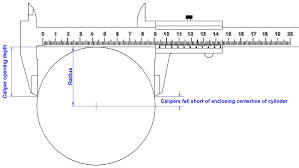Let's start with basics.
What is an Ideal Customer Profile? How Does it Lead to Manufacturing Marketing Improvements?
 An ICP is a process and data framework used to identify and codify the attributes of an ideal prospect company which can be used to improve digital marketing and assess the likelihood of a sales win. (Like a buyer persona, but at the account level.) This then allows a manufacturing company to focus its finite marketing efforts and sales resources on the accounts that are the most viable prospects. This technique originated in the technology sector, and is increasingly common in industrial and capital equipment sales, and it's a basic step manufacturing marketers must take.
An ICP is a process and data framework used to identify and codify the attributes of an ideal prospect company which can be used to improve digital marketing and assess the likelihood of a sales win. (Like a buyer persona, but at the account level.) This then allows a manufacturing company to focus its finite marketing efforts and sales resources on the accounts that are the most viable prospects. This technique originated in the technology sector, and is increasingly common in industrial and capital equipment sales, and it's a basic step manufacturing marketers must take.
Higher Margin, Higher Win Rate, Higher Satisfaction
You've probably had that annoying "I told myself" feeling sometimes when dealing with a frustrating customer situation. In retrospect you realized when you took the deal that a frustration was likely to arise. They weren't a good fit. But the pipeline was lean and so you took it anyway.
 It's easy to remember those deals that turned out to be some degree of unprofitable or straight out sour. But how often do we really learn from them?
It's easy to remember those deals that turned out to be some degree of unprofitable or straight out sour. But how often do we really learn from them?
We may do a cursory project review and identify where oversights, errors, or misunderstandings occurred, but how often do we dig into the buyer's fit? And when we do, how resolutely do we codify that into a set of guidelines to use going forward that we observe even when the pipeline is anemic?
The answer for many capital equipment manufacturing and sales organizations is simple - not often.
Naturally that means that we'll keep stumbling into those situations - and keep regretting them.
But there's a bigger implication. All effort spent winning those deals, then managing the disruption and eventually trying to extricate ourselves, is effort that's diverted from cultivating the right buyers.
Those are the buyers with whom you normally can:
- sell faster (shorter sell cycle and less distended pipeline)
- earn higher margins
- increase your win rate
- create high levels of satisfaction and engender loyalty, follow on sales and higher lifetime value (LTV)
So let's talk about the power of creating the ideal customer profile (often called ICP) for your ideal industrial sales prospect. This approach will help improve your content marketing, search engine optimization, digital marketing, and other marketing tactics, and generate more high quality leads with potential customers for your sales team.
Engineer Your Ideal Customer Profile(s)
 Too often companies undertake this step by thinking back to a recent win and creating a cursory list of obvious attributes. That often overlooks important nuance. Similarly, the spasmodic "target account" process by which the VP asks annually for a list of targets and gets a reply with 10 elephants, misses the process.
Too often companies undertake this step by thinking back to a recent win and creating a cursory list of obvious attributes. That often overlooks important nuance. Similarly, the spasmodic "target account" process by which the VP asks annually for a list of targets and gets a reply with 10 elephants, misses the process.
So how should you go about it?
First, acknowledge that this is a combined effort for sales and marketing.
Understand marketing's roles of market research, product marketing, product market fit, pricing, competitive marketing, content strategy, SEO efforts, and field marketing. You might not break them out, or even differentiate them within a typically small manufacturing marketing team, but they are distinct functions. (If you're lean in these disciplines, that might be a sign that you should shift some sales resources to marketing.)
Second, create a list of wins and losses, with qualitative and quantitative data.
From this information you'll start to extract important ideal customer profile characteristics. In some cases they'll be "include" attributes. In others you'll identify "exclude" attributes. Types of factors to consider include:
- size (revenue, employees, locations)
- geography
- industry
- ownership (private, public, PE)
- growth rate
- competitive positioning (number, stack rank, trend, etc.)
- market factors (secular trends likely to impact positively or negatively)
- their customers' expectations - and their customers' customers expectations and trends
- certain industry specific details (e.g. subject to new regulatory requirements, vulnerable to currency fluctuations)
- management factors (key exec changes)
- philosophy - (e.g. do they go to market on price or quality, attitude toward innovation)
Third, identify meaningful data (both hard and soft) and create an ideal customer profile framework.
 You'll find some details that perhaps correlate but aren't causal. Figure out what's material and start to build your framework with factors and a corresponding include/required, include/desired, exclude/absolute, and exclude/suggested factor. You'll probably need a few ICPs - because of different products/services that target different markets, or different types of buyers with very different buying journeys (e.g. middle-market, privately owned, founder managed vs. multinational, publicly traded.)
You'll find some details that perhaps correlate but aren't causal. Figure out what's material and start to build your framework with factors and a corresponding include/required, include/desired, exclude/absolute, and exclude/suggested factor. You'll probably need a few ICPs - because of different products/services that target different markets, or different types of buyers with very different buying journeys (e.g. middle-market, privately owned, founder managed vs. multinational, publicly traded.)
Fourth, publish it internally, socialize it, and discuss it with every new opportunity and content item.
You need to incorporate ideal customer profiles into your machinery sales and manufacturing marketing culture. It's a critical tool to improve digital marketing, refine the marketing strategy and deliver the kind of results important for manufacturing company growth.
How to Use the ICP(s) for Manufacturing Marketing and Capital Equipment Sales
 These ideal customer profile frameworks provide a roadmap for marketing and sales (and can help with alignment.) But they're just a kicking off point. After all, accounts don't sign contracts...only people do.
These ideal customer profile frameworks provide a roadmap for marketing and sales (and can help with alignment.) But they're just a kicking off point. After all, accounts don't sign contracts...only people do.
The ICPs are supported by related frameworks for the full panoply of buyer personas (ideally each member of the complex buying team of 10-15 folks) and detailed mapping of the complex buying journey and a related customer experience map.
Together these frameworks create an integrated structure to support broad marketing and industrial sales efforts (and the increasingly consolidated function of both.) Three of the most effective uses include:
- Account-based marketing (ABM) & Target Account Sales
- Inbound lead qualification & Outbound sales prospecting
- Pipeline deal management and qualification
Let's look at each in more detail.
Account-Based Marketing & Target Account Sales
The strategic selection of target accounts should be based on empirical data - not emotion, proximity, or recency of memory.
So an ICP is really helpful as a company builds list of marketing targets (often for an ABM program of proactive nurturing), or for Target Account Selling.
It's worth keeping in mind that ABM and target account sales are really two sides of the same coin, but account-based marketing will be more effective because it brings an integrated marketing and sales approach to bear as opposed to just sales resources.
The goal is to incorporate the institutional wisdom embedded in the ICP to select accounts based on criteria which enhance the likelihood of success. The listed accounts will have attributes which make them particularly well suited prospects which theoretically increases the success rate of efforts and return on that revenue growth investment.
Industrial Inbound Marketing & Outbound Selling
Continuing our theme of the fusion of manufacturing marketing and industrial sales, another application of the ICPs is to focus the lead management efforts of SDRs and BDRs (sales development and business development reps.)
Industrial inbound marketing lead qualification is a frequently overlooked step. Frequently when a lead comes in, the team kicks into gear....and they follow the same playbook regardless of the details.
Similarly, the outbound prospecting effort often relies on industrial manufacturing guides that list every company in a region.
Both of these approaches can be improved with the application of lead scoring methods which incorporate "account fit" - using the ICP as the yardstick. The closer the fit to "ideal" the more resources would be put into the lead follow up (e.g. number of outreach attempts, custom audience paid ads for awareness, total number of contacts approached.)
Pipeline Management
Capital equipment sales pipelines are often ineffective forecasting tools, disconnected from project reality and distended with deals that were prematurely quoted and should never have been advanced to mid-level pipeline stages.
That's largely due to poor (often absent) qualification. And the ICP overlay can be one of the simplest and earliest qualification tools to use.
If someone pops up with an RFP from an account which isn't clearly a good fit, then it must reasonably be viewed even more skeptically than one normally might. (Keep in mind, of course, that you're not going to "stumble" into a project in a bad fit account, because you're not going to focus time and attention there as your outbound efforts will be guided by the ICP to begin with.)
Companies should consider adding quantitative qualification criteria (not just sales rep "gut feeling") to advance projects from one pipeline stage to another, particularly when the account isn't a clear fit against the ICP.
Caveats to Keep in Mind
ICPs are not absolute. You may do profitable business with companies that don't have a clear match. You may even discover new market opportunities outside your ICP.
They are a guideline.
Good ICPs will include qualitative factors that require judgement (philosophical alignment) and research (growth rate.)
It's easy to skip steps, and seemingly insignificant skips can compromise the value.
And for companies where the marketing and sales performance metrics are primarily activity based, ICPs will likely create some angst. After all, if people are accustomed to hitting activity targets just doing stuff, they'll likely feel challenged by the requirement to achieve the same activity levels against a more carefully researched and curated pool of targets.
The bottom line, though, is that squandering resources on poorly aligned prospects (showing ads, sending emails, making cold calls, chasing leads and planning on deals) is merely an illusion.
Carefully defined ideal customer profiles are an important tool in the manufacturing marketing and industrial sales toolbox. They will help your team focus on prospects, accounts and opportunities which you'll sell faster, close at a higher rate, and will lead to higher customer satisfaction.
Additional Tips to Enrich Your Manufacturing Marketing
Leveraging Modern Marketing Techniques for Manufacturing Industry Growth
An ICP is an important tool in manufacturing marketing. For deeper context, let's dive deeper into the role of modern marketing techniques in enhancing the industry's growth. Like any other sector, the manufacturing business must adapt to the evolving digital landscape. This includes leveraging various marketing strategies to ensure sustainable growth and success. The integration of these strategies is not just about adopting new tools, but about creating a strong marketing strategy that resonates with both potential and existing customers.
The Impact of Social Media Marketing
Social media marketing has a pillar of contemporary marketing strategies. For the manufacturing industry, utilizing social media channels offers a unique opportunity to increase brand recognition and establish customer loyalty. Platforms such as LinkedIn and Reddit enable manufacturers to engage with their target audience, share industry insights, and showcase their products and innovations. By effectively using social media channels, manufacturers can create a more interactive and personal relationship with their audience.
Refining the Marketing Strategy with SEO
Search engines are pivotal in how businesses in the manufacturing sector are discovered and evaluated by potential customers. A successful marketing strategy today must include search engine optimization (SEO). This involves optimizing website content to ensure it ranks higher on search engine results pages, making it more likely to be seen by those searching for related products or services. SEO is not just about keywords; it's about creating valuable content that addresses the needs and questions of the target audience.
Utilizing Multiple Marketing Channels
The effectiveness of a marketing campaign in the manufacturing business depends on the use of multiple marketing channels. This multi-channel approach ensures that the message reaches a wider audience and taps into different preferences for consuming content. From traditional avenues like trade shows and direct mail to digital platforms such as email marketing and online advertisements, the integration of various channels can significantly amplify marketing success.
Building a Strong Marketing Strategy
Developing a strong marketing strategy requires a deep understanding of the manufacturing industry's unique challenges and opportunities. It involves a blend of traditional marketing techniques with innovative digital strategies. This strategy should be flexible enough to adapt to market changes while maintaining a consistent message that aligns with the company's values and goals. The strategy must be built around an understanding of buyers and their problems, not the company's products.
Fostering Customer Loyalty and Engagement
Customer success is a critical component of long-term success in the manufacturing industry. Email marketing, a knowledge base and a customer portal can be incredibly effective in maintaining communication with existing customers. Regular updates about new products, industry news, and special offers keep the brand top-of-mind and encourage repeat business. Moreover, engaging content can turn customers into brand advocates who share their positive experiences with others in reviews and testimonials.
Targeting the Right Audience
Understanding and targeting the right audience is essential for any marketing campaign. For manufacturers, this means identifying the businesses (ICP) or individuals (persona) most likely to benefit from their products. This target audience should guide all marketing efforts, ensuring that the content is relevant and appealing to those who are most likely to convert into customers.
Enhancing Brand Recognition
In a competitive market, brand recognition can be a significant differentiator. A well-executed marketing campaign can increase a company's visibility and help establish it as a leader in the manufacturing industry. This involves consistent branding across all platforms and clear messaging that highlights the company's understanding of their customers' business challenges.
Email Marketing: A Vital Tool
Email marketing remains a vital tool for manufacturing businesses. It allows for direct communication with potential and existing customers, providing a platform to share detailed product information, company news, and industry insights. Well-crafted email campaigns can drive traffic to the company's website, increase leads, and boost sales.
Crafting a Successful Marketing Strategy
The manufacturing industry's growth increasingly depends on a well-rounded and innovative marketing strategy. By embracing a mix of traditional and digital marketing techniques, manufacturers can effectively reach their target audience, build customer loyalty, and establish a strong brand presence in the market. As the industry continues to evolve, so too must the strategies used to market its products and services, ensuring continued success and growth in a dynamic global marketplace.


